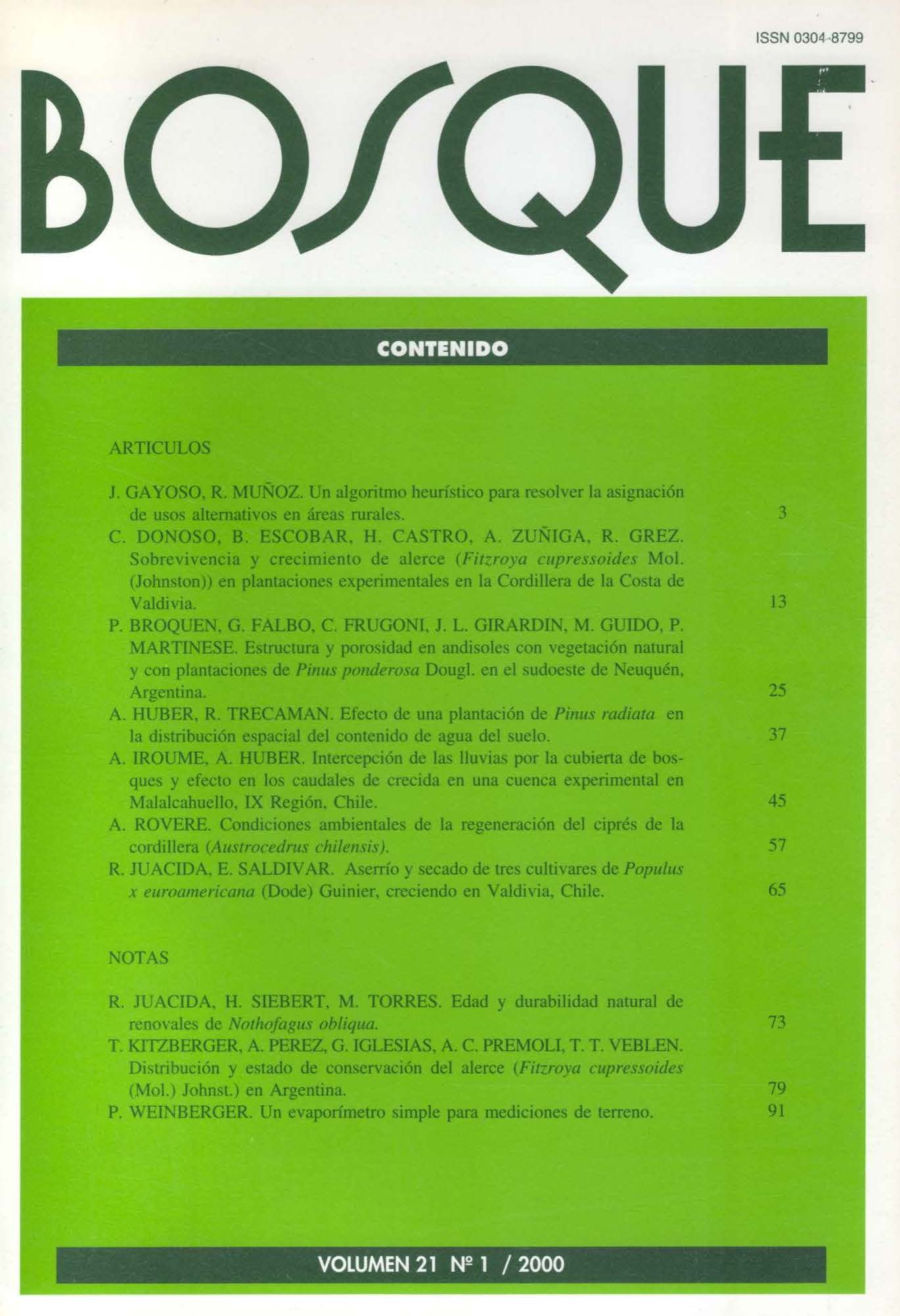Growth and survival of alerce (Fitzroya cupressoides Mol. (Johnston)) in experimental plantations at Cordillera de la Costa in Valdivia
Main Article Content
Abstract
In order to test the possibility of getting, successful plantations of Fitzroya cupressoides (alerce) and to learn about growing rates for future restorations, plants grown. from seeds and. from, cuttings were planted in a transect through the Valdivian Coastal Cordillera; seed plants were planted with and without fertilization. Provenances belong to the Coastal Cordillera. Ten plots along the transect, on different sites and altitudes, were established. Each plot was divided into three plots with 16 plants each: one with seed plants with fertilization, another without fertilization and a third one with plants produced from cuttings. During the first five years mortality and heights of plants were measured. During the last year some climate and soil attributes were measured. Lower mortality and higher heights and better growth rates were found for plants growing on the western slopes of the Coastal Cordillera compared to plants growing on the eastern slopes. These effects seem to be related to vegetation cover in the plantation sites and is stronger in seed plants with fertilization. Height and mean annual growth were normally higher in fertilized plants if compared with the cuttings. And they were normally lower in high sites with low vegetation cover, where climatic and edaphic restrictions are very important.

